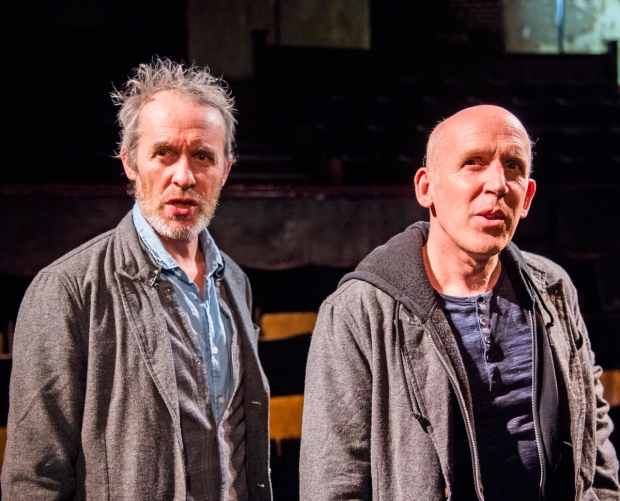Review: How It Is (Part One) (Print Room at the Coronet)
Samuel Beckett’s challenging prose text adapted for live performance by Gare St Lazare

©Tristram Kenton
The Ireland-based troupe Gare St Lazare is dedicated to "unlocking the mysteries" of Samuel Beckett's prose, and therein lies a problem. As this dramatised account of How It Is (Part One) shows, the mystery, once unlocked and set free from the printed page, withers and dies, usurped by theatrical effect.
Beckett wrote his three-part novel How It Is in 1961, the same year as his play Happy Days. The two works share a common theme: the determination to live even when condemned to an appalling and inexplicable confinement. While the latter's Winnie is buried neck-deep in sand, the nameless narrator of How It Is is a nowhere man in a nowhere land, doomed by who-knows-who to crawl through mud in pitch darkness with only a sackful of tinned food to sustain him.
The experience of reading Beckett's original novel, which he shaped as a stream of semi-consciousness in short chunks with no punctuation and little narrative form, is cumulatively shattering. It reduces the human condition to a near-abstract: a homeopathic life, a blotted memory of things past, present and future and a parable of existential survival. The circular narrative is compelling, its repetitions hypnotic, but it is shot through with bolt-upright lines like "an opener and no tins I'm spared this time tins and no opener".
Rather than stage this interior monologue as it unfolds in the mind's eye – an impossible task – director Judy Hegarty Lovett summons up the dark arts of theatre to illustrate a reading of it. Palls of smoke catch Simon Bennison's endlessly resourceful lighting designs; subwoofings from composer Mel Mercier growl and lower; actors Conor Lovett and Stephen Dillane misdirect the audience by materialising and vanishing all over the stalls and circle of Notting Hill's old Coronet cinema. (Lovett's spectators sit on chairs at the front and face out into the dilapidated auditorium.)
Essentially, though, the actors' task in a prodigious feat of memory is to stand and deliver the dense, 40-page first part of How It Is and to punctuate it on the fly by means of vocal inflexion. For the first hour of the unbroken 110-minute duration Lovett chats to the audience confidentially, like a storyteller sharing craic in a pub; then Dillane takes the reins for a more histrionic and thesp-ish run-in. Occasionally the two actors share the spoils so that one of them is on direct-address duty while the other hisses or mutters the same words off the beat. For a spell Mercier joins in too, which makes for a trio of (intentional) near-gibberish.
You may find yourself beguiled by it and entertained, although it will help if you have time to read the novel beforehand. But – crucially – I doubt you'll be moved. From the privacy of one's own eyes Beckett's printed words dig talons into the psyche, whereas the extraneous effects in this audio-visual onslaught ensure interest but keep emotion at bay. It's a case of look but don't be touched.


















